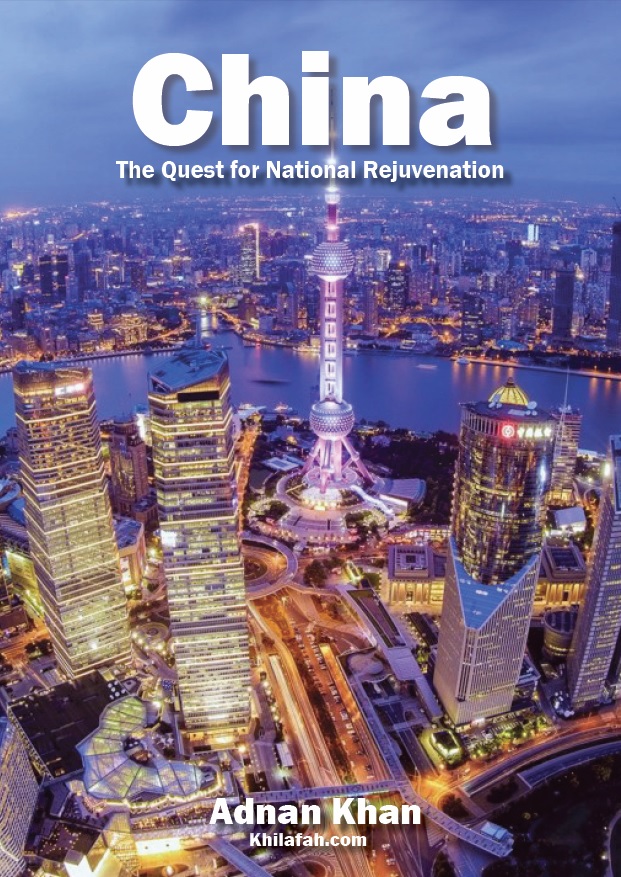Introduction
On 3rd January 2019, China landed a lunar probe on the dark side of the moon; the Chang’e 4 spacecraft performed a soft landing in the moon’s Von Kármán crater. It was the first mission in human history to overcome the technical challenges of landing on the moon’s far side, which, among other feats, required the probe to communicate with Earth via a lunar satellite relay. The Chang’e 4 mission was a coup for China’s ambitions but what is much more profound is the fact that China was an economic wreck just a few decades ago.
As the Chinese celebrated this success it was also the 40-year anniversary of China’s ‘Open and Reform’ era. Forty years prior on 29th December 1978, the 11th Central Committee of the Chinese Communist Party (CCP) released the official communiqué from its third plenary session, launching probably the greatest economic growth experiment in human history. At the time China had the world’s largest population but it was also one of the poorest countries in the world with poverty exceeding 90% of the population.
Today, after 40 years, China’s economy has transformed into a colossal $13.7 trillion mammoth industrial monster. Today, China’s economy represents nearly 20% of the global economy. Using different measures of GDP such as Purchasing Power Parity (PPP), China’s economy would be larger than the US economy. This is a unique moment as the US has been the world’s largest economy every year since 1888. According to the World Bank China has moved 850 million people out of poverty in just four decades.1
Not a day goes by without China making some headlines. Whether it is China’s space ambitions, its aircraft carriers, its artificial intelligence (AI) developments, infrastructure, railways, new cities or its cyber capabilities the world cannot get enough of China.
The last decade has seen a plethora of research, analysis and literature on China. Everyone has contributed – from politicians, engineers, policy makers and academics – to what is the most significant development since the collapse of the Soviet Union, on the rise of China. The consensus is China is a potential rising power that represents a threat to the global hegemon – the US. For many it is a matter of when, not if, China will replace the US. US military capabilities are considered to be eroding as China makes breakneck defence developments and all publications and research into US military capabilities consider China to be closing the gap.
In the US think tanks to the Pentagon and to the State Department all consider China as an existential threat to the US established global liberal order and America’s position as the sole global superpower. After decades of cooperation, partnership, competition and containment, President Donald Trump’s trade war in 2018 officially kicked off the battle for the 21st century as the global hegemon moves to deal with the rising power. No country has ever developed an economy as rapidly as China has and therefore it is no wonder many consider China to be the nation that will bring to an end to the rather short American century.
It has been three decades since the collapse of the Soviet Union which saw the US emerge as the sole global hegemon. But today the global balance of power is in flux with former European rivals slipping down the global premier league, but with China’s rapid economic development and break-neck military prowess, these socio-economic changes have provided China with the capabilities to challenge the global superpower. This fact poses new challenges to US hegemony. The global superpower and those nations that challenge it form the cornerstone of the global balance of power, which is the basic building block of making sense of the world. This is why this development should be given attention by all people.
This is not the only reason why Muslims should have a view and peruse this development. Parts of China are Muslim land and the Muslims there are oppressed by Chinese government. Our rulers have not just turned a blind eye to our brothers and sisters’ plight, but they welcome Chinese money, investment and infrastructure as they kill, colonise, expel and assimilate our brothers and sisters.
Much of the world looks at China in awe, but similar claims were made about the Soviet Union in the 1950s and 1960s, then Japan in the 1970s and 1980s and then Germany in the 1990s. China is the latest rising power and it is important as Muslims we have a view on whether this is just another dot in a long line of challengers or if it possesses the capabilities, foresight and vision to change the world. This should concern all peoples and it has the potential to affect their lives, as Muslims this makes it all the more important.
It is with this in mind this booklet has been written. The opinions and views expressed in this booklet are those of the author.
Written by Adnan Khan for The Khilafah website.
(The Khilafah website is an official Central Media Office of Hizb ut Tahrir website)
18 Dhu al-Hijjah 1440 Hijri 19 August 2019

